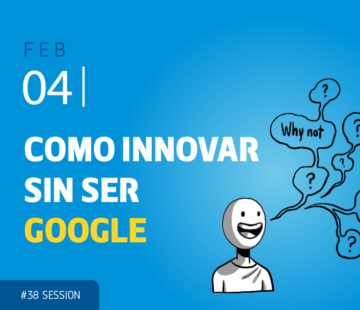GE seeks collaboration to disrupt itself

We usually point to collaboration examples and cases that show how a particular organization or company is collaborating with another particular organization in a particular area or project with a single and particular target in mind. But it’s still not easy to find companies and organizations where collaboration goes beyond a particular case and need and has been embraced as a key and even essential element of its general strategy and business model.
GE is undoubtedly one of such still scarce cases. It’s not the first time we write about a serial collaborator , but in the case of Uber partnering like crazy we concluded it was difficult to tell mere publicity stunts apart from real strategic long term and purposeful alliances. In the case of GE, on the other hand, we are pretty sure collaboration has become a key component of the new corporate mindset and culture needed for the current transformation of the company.
For more than a century General Electric made most of its revenue by selling industrial hardware and repair services. But new technologies and operational models in which advanced software is prevailing put GE at increasing risk of losing many of its top customers to nontraditional competitors, threatening to turn GE into a commodity equipment provider. GE responded five years ago with a multibillion-dollar initiative focused on what it calls the industrial internet. This is not the place to explain this new strategy in detail, but suffice to say it’s transforming the company’s business model. And making collaboration a much needed part of the corporate strategy…
New buyer-seller relationships
We have already wrote in here about some of these initiatives. For example, GE’s wind farm deal with the global energy giant E.ON. In this partnership GE used E.ON’s extensive operational data to run advanced analytics and simulations, and instead of trying to sell more turbines and associated equipment to the power-generation company, GE offered value by using information to optimize equipment performance, utilization, and maintenance, charging a percentage of the customer’s incremental revenue from improved performance. In this new operational model, customer engagement becomes far more complex, making mandatory going beyond the traditional buyer/seller relationship.
Inner collaboration
GE has been also trying to develop a more collaborative inner environment between business units and departments. For instance, when the company launched GE Software in 2011, the company’s IT efforts were scattered. Each business unit made choices according to local conditions and the result was wildly uneven technical and commercial performance. Accustomed to operating autonomously, getting business units to buy-in for GE Software was a challenge. It helped that the new division was structured to encourage collaboration. Contrary to what could have happened in the past, GE Software was implemented as a not mandatory service provider that business units could or could not use and it didn’t have its own Profit & Loss accountability, so it did not have to compete with other business units.
Joint ventures
The new strategy also needed to strengthen the loose network of suppliers, distributors, and developers of related products and services that enable and enhance GE’s offerings. To build out its ecosystem, GE is experimenting with different types of partnerships. Joint ventures, for example has allowed GE to try new ideas with less investment and internal pressures. Caradigm is a 50/50 joint venture formed by GE Healthcare and Microsoft in 2012 to develop software able to improve patient care reducing healthcare costs. Taleris is another example of a GE joint venture, this time between GE Aviation and Accenture and created to implement and develop new technology to predict aircraft maintenance faults and reduce flight delays.
Crowdsourcing innovation
GE is also relying more on crowdsourcing for innovation. GE Aviation partnered with Alaska Airlines to present Flight Quest. Using a contest/challenge format, the company used an open platform and two months’ worth of FlightStats data available to everyone able to come up with algorithms that could better predict flight arrival times, with a total of $250,000 awarded to the top five entries. As we also explained here, GE also partnered with Local Motors to engage with a community of industrial designers, scientists, engineers, makers and early adopters to address some of the toughest engineering challenges and innovations, then manufacturing those designs in a micro-factory for rapid product introduction and iteration.
Competitors
Finally and more importantly, GE has also partnered even with potential competitors, a sign that definitively shows the level of commitment to collaboration in a company’s culture and mindset. For instance, GE formed with Intel a 50/50 joint venture to create a new healthcare company focused on telehealth and independent living, teamed up with Cisco to develop a set of best practices for deploying GE’s Brilliant Manufacturing and create “the factory of the future”, or partnered Amazon Web Services for cloud delivery.
GE Digital Alliance
All these and many other companies are already partners of the GE Digital Alliance Program announced by GE this year. The first ever dedicated to growing the digital industrial ecosystem, this new alliance program is designed to connect systems integrators, telecommunications service providers, independent software vendors, technology providers and resellers with the technology and digital industrial expertise of GE. The program offers participants access to sales, marketing and technical resources from across GE Digital, as well as digital tools, training and enablement, online content and assets.
GE announces Digital Alliance Program to spur Industrial Internet Growth